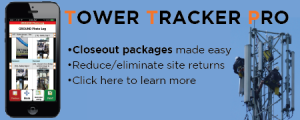The answer, of course, is yes to this stupid question. Why did I ask this? Well, I was reading an article by Ericsson about the advantages of having 5G NR and LTE working together, what a novel idea, like who has a choice in this?
Article found here, https://www.ericsson.com/en/ericsson-technology-review/archive/2018/the-advantages-of-combining-5g-nr-with-lte?utm_source=LinkedIn&utm_medium=social_organic&utm_campaign=TeamEricsson&utm_content=38ae46f4-4fb4-4bd6-872b-a0694d61648e if you want to glance at it. Or, download the PDF at https://www.ericsson.com/assets/local/publications/ericsson-technology-review/docs/2018/etr-2018-09-5g-radiodeployment.pdf if that’s easier.
OK, Ericsson, I am a fan of what you’ve done this year. You’ve done great things in 2018, turned your company around and added more and more jobs in the USA, (where I live). I love that because Nokia and Samsung have done all that they can to move more and more out of the USA. FYI – I am pro USA, sorry world, that’s where I live, and I see so many people losing jobs in telecom. Oh, one more thing, it’s the largest telecom market for revenue in the world, yet, all the OEMs want to offshore everything. I think its time for a disruptor!
Now, back to the article. Here’s the thing, WTF? That’s like saying 3G and 4G are better together. Why do I think that is a stupid statement? Here’s why. Any carrier in the USA will deploy them together anyway, and they probably have 3G out here as well. Not just Tier 1 carriers! Also, what about Wi-Fi, they rely on that to offload the carrier’s network. Luckily, I actually read the article.
The title is awful. Not sure who would say such a silly thing or how it could be taken seriously with anyone working on LTE or 5G deployments. When you read the article, it’s much better at explaining that they really are talking about spectrum, Massive MIMO, and planning. I don’t know why they didn’t call the article, “How to get the Most out of your 5G NR Deployments with LTE as the foundation”. Seriously, it makes more sense.
Anyway, let me break it down for you. They cover how 5G spectrum will be either be 3.5GHz or mmwave. That is for everyone but T-Mobile and Sprint. They have other plans which they are executing now. While T-Mobile has fought for 3.5GHz spectrum, they also plan to roll out 5G in the 600MHz spectrum. Sprint is already rolling out massive MIMO in 2.5GHz with LTE. They have plenty of 2.5GHz spectrum to deploy 5G in the same spectrum. Meanwhile, AT&T is deploying 5G in both mmwave and other spectrums while Verizon will use 3.5GHz and mmwave. It’s obvious that mmwave is the choice of FWA.
For a list of products to support Wade4Wireless, click here!
Would you sign up for a membership site with private content? If so, email me at wade@techfecta.com and write Membership.
The article talks about how MIMO will be a game changer. I am talking about massive MIMO which includes MU-MIMO and beamforming technologies. Who knew that when Ruckus used beamforming for Wi-Fi years ago that it would be a norm for carrier spectrum now?
The article brings out the fact that LTE and 5G will have to work together. No shit Sherlock! This is true, but more out of necessity since hardly anyone is rolling out a 5G only system. If you say DISH is doing it, I’ll believe it when I see it. They’ve done little with their spectrum to date. Dish’s history of wireless deployment is weak at best outside of TV delivery. All that money for spectrum and very little, if anything, to show for it. Although, they finally appear to be making progress in deploying something, supposedly a 5G IOT system. Again, I’ll believe it when I see it.
Spectrum is key because 5G can do more if it has the bandwidth. Sprint has prime spectrum for 5G in their 2.5GHz band. They literally have 100MHz of spectrum in most of the USA. That’s ideal for 5G. It should be a game changer that would allow them to use it for backhaul and/or fronthaul.
I believe that Verizon will also want to use the mmwave to supply backhaul to their small cells and CRAN sites and use it to deliver broadband to end users to create high-speed 5G hotspots. That’s going to be awesome.
Indoor use for mmwave should take off almost immediately, but there are health concerns. Everything I read says the spectrum is safe, but so many people are scared of it. The spectrum is the key.
I bring up safety because that’s a huge question in Quora, “How safe is 5G?” and the point I try to get across is that it’s not the technology but the spectrum and power that can hurt people. Oh, by the way, your microwave uses 2.4GHz, just like Wi-Fi in the ISM band. Wi-Fi can run in several spectrums, today most people use 5.8GHz, but 2.4GHz is still being used. What’s the difference? Wi-Fi power is so low; it’s not a safety concern whereas the high-powered Klystron is hammering 2.4GHz to through food and liquids! Power is the difference, and the FCC has strict limits that the carriers are supposed to follow when deploying on poles. Most small cells are very safe, but the CRAN radio heads could be a different story if not carefully monitored.
Anyway, I digress.
The thing is that 5G will need new spectrum, duh! That spectrum should have enough bandwidth so that we see incredible improvements in throughput and latency. That’s why 3.5GHz is nice, but mmwave is amazing because it has so much more bandwidth. If we can get mmwave spectrum with 100Mhz to 1Ghz carriers set aside for 5G, then imagine what you could do! A lot of broadband stuff! Interactive games, AI functions, near real-time functions and more. How cool would that be to have dedicated spectrum that should be more efficient than Wi-Fi? Yet, if we have dedicated Wi-Fi, it works really well. BUT, you’re only as good as you backhaul, the carriers need to make sure that the backhaul can handle more than 1Gbps. Here is where I think Sprint might fall short. To raise all the backhauls to 100Gbps to handle the new loading costs a lot of money. It ain’t free! And, the reoccurring OpEx will be more. So now you are adding monthly costs to your sites.
How do we cover the increased backhaul costs? We need to load the sites with more and more subscribers! While we all loved densification like adding small cells everywhere. What we really want, at least what the carriers really want is to get as much money from one site as possible. This is why small cells never went into the 100,000s for deployment. They only could handle so many users. How did we overcome that issue? We deployed CRAN, a radio head that could handle all the loading of a macro site sector. That is a game changer. Now we can have very small cells in dense coverage areas that handle heavy user loading as well as high throughout.
Now, many carriers will call CRAN deployments small cells. That’s a ruse to get them deployed. A CRAN site requires a lot more fiber than a small cell, it is a bigger radio head and has more power and loading. Sorry, I’m off topic again.
Let’s sum this up, 5G and LTE will work great together; it has to. Massive MIMO is a great improvement. Spectrum matters, we need more to do more.
- Spectrum – the FCC needs to be more proactive. I mean, can I go out and use 3.5GHz CBRS spectrum today? How long did they sit on that, like 3 or more years? What about mmwave? Some carriers are deploying this year. Why does it take the FCC so long to move on spectrum? No wonder there was a concern we would fall behind China in the 5G race, that falls squarely on the FCC’s shoulders. Anyway, we all know China waits for the USA to develop the technology so China can make it cheaper. Business as usual.
- Massive MIMO systems – Sprint and T-Mobile are working to deploy massive MIMO this year so that next year they can deploy concentrated 5G systems along with an improved LTE system. The antenna plays a big part in this deployment. Antenna systems are very important.
- 5G – yes, 5G will be live next year, finally! Actually, I’m sarcastic again, no one thought 5G would be deployed until 2020, yet we’ll see it in 2019, a year early. That is working out very well for T-Mobile and Sprint. They committed to these systems.
- LTE – already deployed and will have to work with 5G. If for no other reason, 5G can’t do voice and if someone has to call 911, it has to default to either VoLTE or 3G or 2G. Calling 911 is a requirement in the USA and 5G has to switch back to a voice system. There have been great advances in LTE like VoLTE, carrier aggregation, and massive MIMO. It’s better than ever.
- Backhaul – If the backhaul is crappy, it doesn’t matter what technology or how much spectrum you have. If you have a funnel for a backhaul, then the forward bandwidth gets choked, and the systems look like crap. Sure, it costs more, that sucks! Just commit and do it right! Do you want to be the one who has crappy 5G because you saved a few bucks on backhaul? If that’s what you’re thinking, maybe you should have kept those T1 lines! Or maybe DS3 because it’s so much faster and this Ethernet thing is a phase! I bring that up because when we deployed the first 100 Mbps Ethernet system in Maryland, that’s exactly what I was told by all the wireless teams. They laughed at the public library system for deploying an all-Ethernet system because DS3 was the standard. I wonder what they are saying today? Oh, that’s right, they probably all retired!
For Ericsson, they need to do a better job naming their articles or white papers. That title sucks. If you need help, let me know. The information was good, not complaining about that.
Reference:
- https://www.ncbi.nlm.nih.gov/pmc/articles/PMC4629874/
- https://www.t-mobile.com/news/mwc-2018-5g
- https://www.ecnmag.com/news/2017/06/t-talks-5g-spectrum-we-have-what-we-need-get-started
- https://www.fiercewireless.com/wireless/at-t-likely-to-start-refarming-low-band-spectrum-for-5g-next-year
- https://arstechnica.com/information-technology/2017/05/verizon-outbids-att-for-nationwide-5g-spectrum/
- https://www.cnet.com/news/verizon-claims-its-ultra-wideband-5g-will-be-better-than-the-rest/
- https://www.ericsson.com/en/ericsson-technology-review/archive/2018/the-advantages-of-combining-5g-nr-with-lte?utm_source=LinkedIn&utm_medium=social_organic&utm_campaign=TeamEricsson&utm_content=38ae46f4-4fb4-4bd6-872b-

- https://www.ericsson.com/assets/local/publications/ericsson-technology-review/docs/2018/etr-2018-09-5g-radiodeployment.pdf
Thank you for your support and your time. And good job on learning all you can in the wireless industry, you are amazing! Now, go out and impress people!
Would you sign up for a membership site with private content? If so, email me at wade@techfecta.com and write Membership.
Do you want an occasional email with free PDFs of these reports along with book and training offers? Read posts like these offline!
Be smart, be safe, and pay attention!
See Ya!
More products from TechFecta and Wade4Wireless that support WADE!
The foundations below do beautiful work, spreading love when all seems lost.
Climbers can get seriously injured and/or die on the job. Support the workers who build and install the wireless systems!
Together we can honor and remember the fallen in our wireless family.









 Putting together your smart city tech solutions, planning, development, and more…TechFecta! Guiding you to a better plan through consulting!
Putting together your smart city tech solutions, planning, development, and more…TechFecta! Guiding you to a better plan through consulting!













![DAS 101 Distributed Antenna System: A Basic Guide to In-Building Wireless Infrastructure by [Baasan, Soyola]](https://i0.wp.com/images-na.ssl-images-amazon.com/images/I/41lhG0BQVJL.jpg?resize=99%2C158&ssl=1)





![DAS 101 Distributed Antenna System: A Basic Guide to In-Building Wireless Infrastructure by [Baasan, Soyola]](https://i0.wp.com/images-na.ssl-images-amazon.com/images/I/41lhG0BQVJL.jpg?resize=165%2C263&ssl=1)















